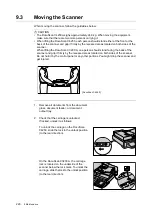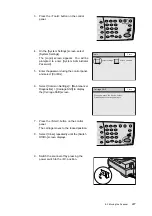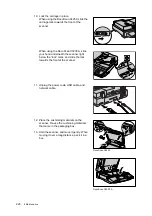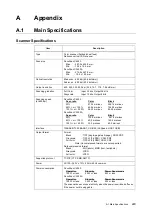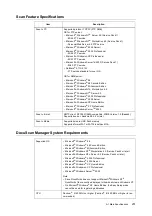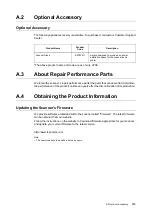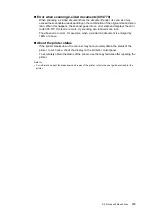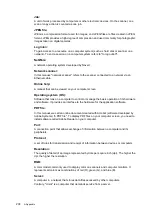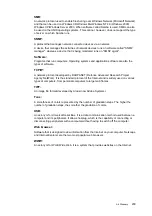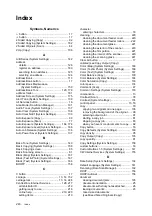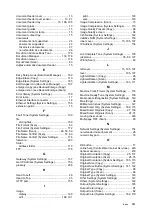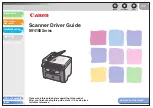
238
A Appendix
Job:
A unit of work processed by computers or other electronic devices. On the scanner, one
scan or copy action is counted as one job.
JPEG file:
JPEG is a compression format used for images, and JPEG files are files created in JPEG
format. JPEG provides a high degree of compression and used commonly for photographic
images taken on digital cameras.
Log in/on:
To gain access to a resource on a computer system (such as hard disk or scanner on a
network). To end a session on a computer system refers to "to log out/off".
NetWare:
A network operating system developed by Novell.
Network scanner:
In this manual, "network scanner" refers to the scanner connected to a network via an
Ethernet cable.
Online help:
A manual that can be viewed on your computer screen.
Operating system (OS):
Software that runs on a computer to control or manage the basic operation of its hardware
and software. It provides an interface to the hardware for the application software.
PDF file:
In this manual, we call an online document created with Acrobat (software developed by
Adobe Systems) "a PDF file". To display PDF files on your computer screen, you need to
install software called Adobe Reader on your computer.
Port:
A connection point that allows exchange of information between a computer and its
peripherals.
Protocol:
A set of rules for transmission and receipt of information between devices or computers.
Resolution:
The quality of detail of an image represented by dots per square inch (dpi). The higher the
dpi, the higher the resolution.
RGB:
A color model commonly used to display color on scanners and computer monitors. It
represents all colors as combinations of red (R), green (G), and blue (B).
Server:
A computer in a network that stores data files accessed by other computers.
Contrary, "client" is a computer that demands service from a server.



